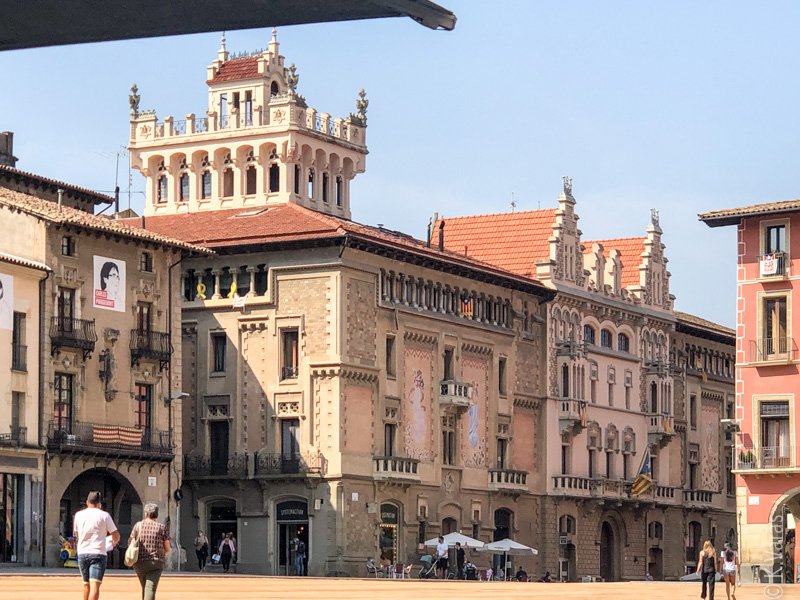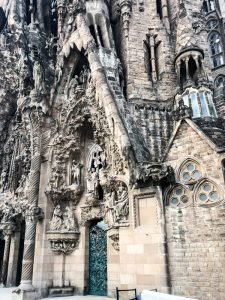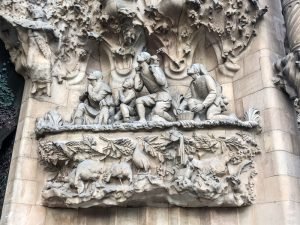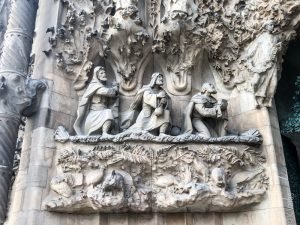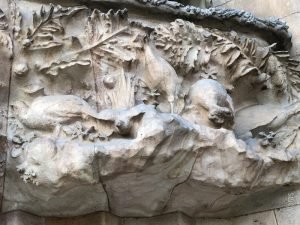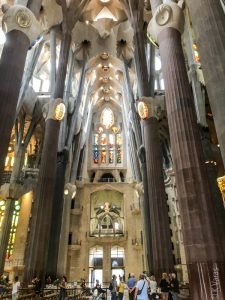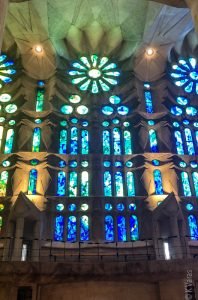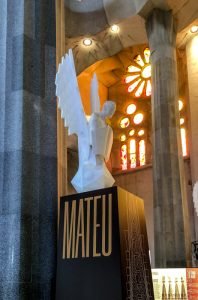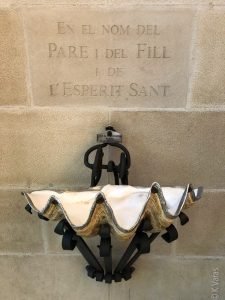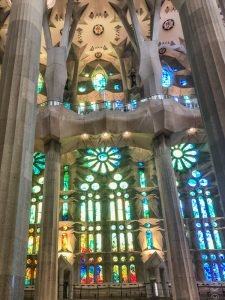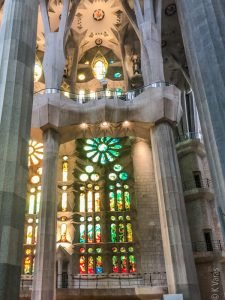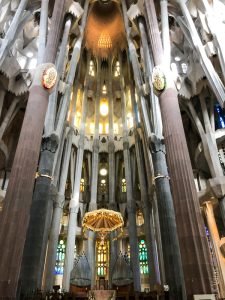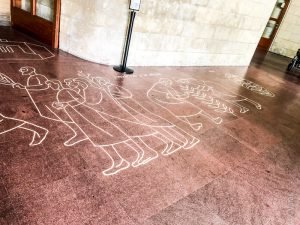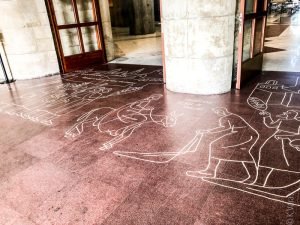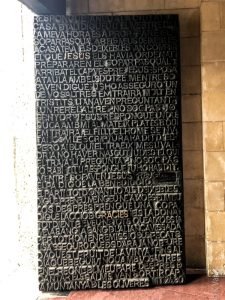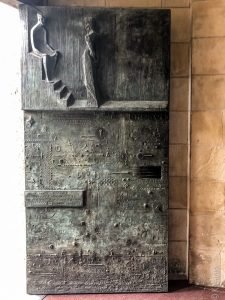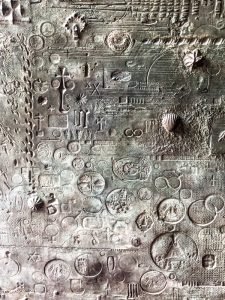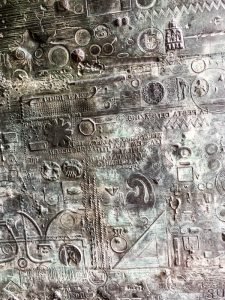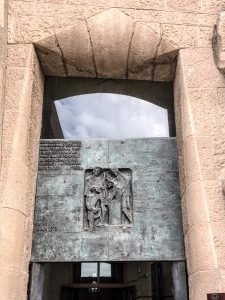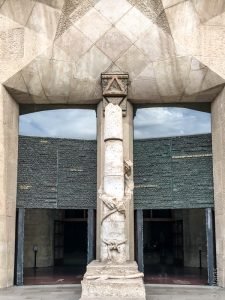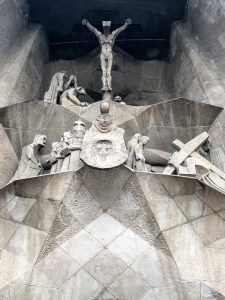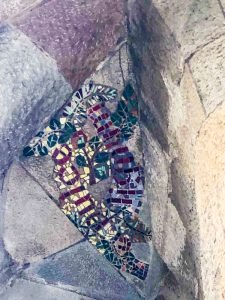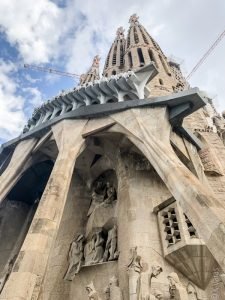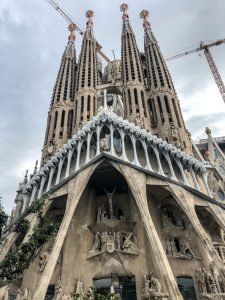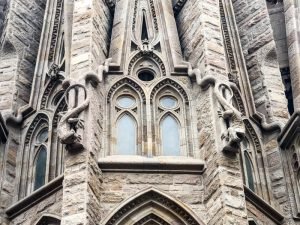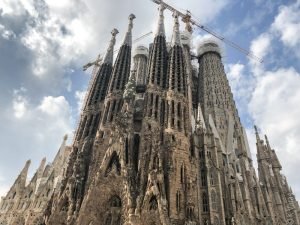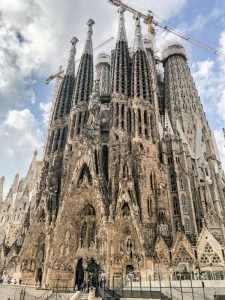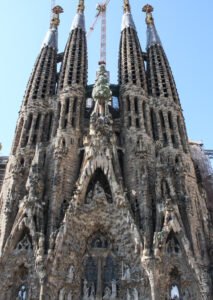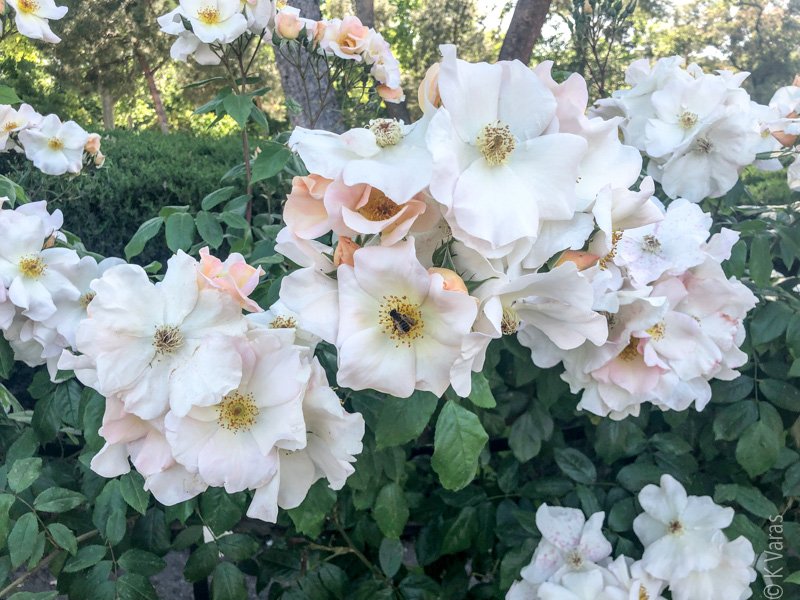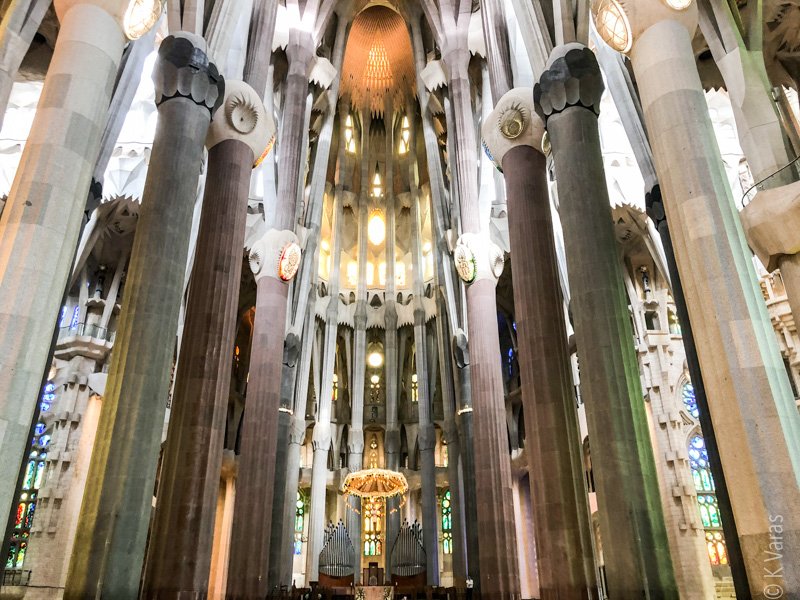
La Sagrada Familia
When people think “Barcelona” they often think “Gaudí.” When people think “Gaudí”, they often think “La Sagrada Família”. If you’re still unfamiliar with the man or his creations (and my fawning over La Pedrera wasn’t enough), let me tell you a little about both. Well, specifically La Sagrada Família, because you don’t have time to read about all his creations and I don’t have time to write about them.
Antoni Gaudí was a famous Catalan architect during the latter part of the 19th and early 20th centuries. He was based in Barcelona and the majority of his works are in this city. Gaudí was part of the Catalan Modernist movement (Modernisme), which in itself was an artistic and cultural revolution, very closely tied to the 100-year (at the time) Catalan struggle for identity and independence. It was similar to other cultural movements of the day, such as Art Nuveau, but it definitely had a very localized flavour.
Some common characteristics of Catalan Modernism included a preference for shapes that echo organic curves of the natural world rather than the harsh straight lines of the Industrial Revolution and its machines. Nature was the primary source of inspiration and it was extensively featured in details on façades, murals, balconies, windows, ceilings, and other architectural elements; leafs, trees, flowers, and animals can be found everywhere. While these were simple in their origins, they were also highly ornate, with much focus on aesthetic details and craftsmanship. And this is why every building built by people like Gaudí and others is a feast for the eyes.
La Sagrada Família (construction of which began in 1882!) really is such a feast … one can never get enough. I have seen it three times now, at least from the outside. The first time, in 2011, I have to admit I was a little underwhelmed, but only because I had seen models of the finished project and then, when looking at the structure, I kept thinking “they’ve spent almost a hundred and thirty years and this is all they’ve got?” What I did see was cool, sure, but definitely not as far along as I had expected.

Don’t get me wrong, it was still breathtaking. And two years later it didn’t seem all that much bigger:

The work done in the last seven years has been nothing short of amazing, however. Sure, not all the towers are completed yet, but they’re coming along, finally. You can now really see the size of the whole structure, not just hints at it. I tip my hat to the builders and craftsmen who have done so much work in the last few years.
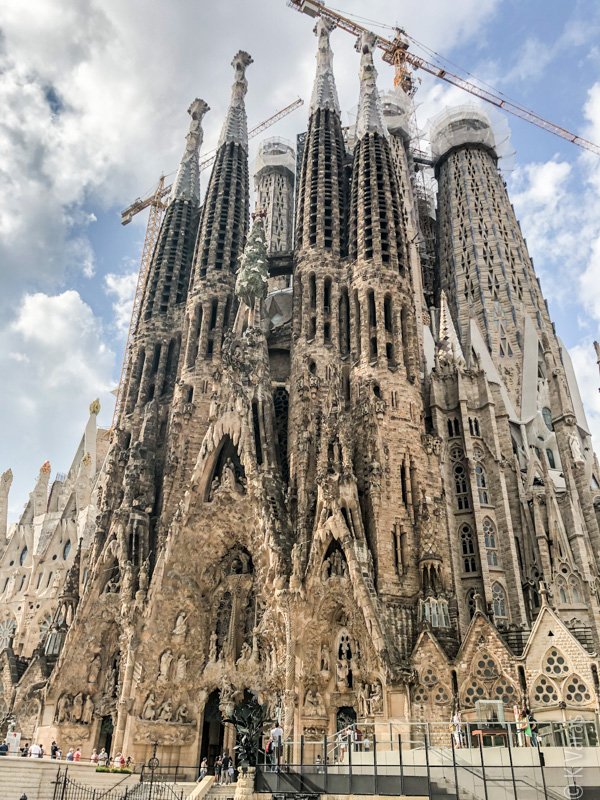
 Nativity façade, La Sagrada Familia in 2020
Nativity façade, La Sagrada Familia in 2020The one thing I didn’t get to do during previous visits was go inside; I wasn’t going to let that happen again. One of the side benefits of Covid-19 has been the total lack of tourists competing for space at the most popular sites, and the same was true here. I did buy a ticket online (together with a side trips to Gaudí’s house in Parc Guëll) with a comfortable start time. When I got there, there were very few people going in, though clearly the entrance area is set up to have very long wait lines: I added quite a few steps to my daily tally just zigzagging through the cordoned-off area. This was also the one of the most security-heavy places I have visited; x-rays for bags, metal detector for me (set off noisily by my knees, of course), a temperature check. There have been a number of attempts by crazy people to set fire to the church in the past (one only a few weeks after my first visit in 2011) so I don’t begrudge the security measures at all.
Before going inside I stood outside for a while to get a closer look at the incredible Nativity Façade (this is the façade facing East-ish onto Plaça de Gaudí). This is the part of the Basilica Gaudí was actually alive to see be completed, and he supervised all the work while living in his studio/workshop on the premises. In previous years I had to struggle to see much without the benefit of a zoom lens because of the distance from the street and the presence of building equipment and scaffolding. Now I got to see it all up close. When I gazed upon the incredible detail and sheer volume of elements, the only thing I could think of was a sand castle. Yes, a sand castle. Imagine sitting on the beach and making a very large tower by pouring wet sand onto it. From afar that is just what this part of the building looks like. Even the dark brown colour reminds me of wet sand. When you get up close, however, you see there is so much more to it. I tried to capture some of the detail but it’s really impossible to do it justice. When I look at photos from previous years, I see that I managed to capture so many different bits each time and I’m sure that if I went again tomorrow, I would see something new. That’s the magic of La Sagrada: you never see anything quite the same way!
As soon as I passed through the Portal of Charity, I knew I was about to have a formative experience. I am as far from a religious person as one can get but that does not mean I cannot appreciate the awe one feels upon entering the Basilica: the height of the main nave and side aisles, the stained glass windows and their colours, the ceiling! It really takes your breath away. There is a very good reason I’ve included so many photos of the windows: each one is unique and together they bring light and a lightness to the interior you do not expect when outside. The height of the internal columns forces you to constantly look up. I honestly have no recollection of the floor design at all; I’m just surprised (and relieved) I didn’t bump into anyone.

The narthex (I learned a new word: the narthex or vestibule of a church is the entranceway into the main hall or nave) leads to the south-ish-facing Glory Façade, though the construction on this part has only just began recently. Instead we are treated to the four terminals of the major towers dedicated to the evangelists John, Luke, Matthew, and Mark. I’m not sure if those were the actual sculptures or just plaster moulds but they were impressive. I think these four towers are progressing quite well; their bulk is becoming more and more noticeable. Unfortunately the elevator to the viewing areas in one of the towers was closed (stupid Covid) but that means I’ll just have to come back again.
As I walked back down the nave, still looking mostly up, I was rather surprised by a couple of things: the chancel area (that’s the area around the altar) is quite small and understated with a small figure of Jesus hanging from the cross suspended above the altar itself and what looks like a carnival umbrella above it. There are also very few overt religious symbols around the whole space. No images of saints, no stations of the cross, no side chapels like those in the Catedral de Santa María de la Sede in Sevilla. There is a lot of symbology, yes, but it’s all quite subtle and in being so, leaves the interpretation to the visitor. If you are a religious person then I’m sure you see and understand it; if you’re not, you can enjoy the beauty of the architecture and design for what it is. While clearly a religious space, La Sagrada Familia is a space where everyone can feel comfortable. There was also a great place to just quietly sit and ponder the magnificence of it all and that’s what I did, in an area just in front of the altar that was clearly reserved for introspection, meditation, or just quiet repose. I rested my tired legs.
I do have a thing for cool doors, and this side of the Basilica did not disappoint. Though, in stark contrast to the Nativity side, the Passion Façade can be reached by two sets of massive doors that made me think of an advanced math classroom rather than the biology or botany one opposite, and another one that reminded me of a letterpress. The whole façade has a very different feel — it does not have that organic and fanciful aspect so typical of Gaudí’s designs but rather it is severe, geometric, and somber. This makes sense, of course, since the “Passion” in Passion Façade refers to the aforementioned depiction of Jesus’ death and thus must be presented with the requisite gravity. It’s easy to think that someone other than Gaudí must have been responsible for this design but it seems that although he wasn’t around when the carvings were done (in 1990!), the sculptor Josep Maria Subirachs used his original drawings. I found the figures fascinating but also oddly familiar, and I’m not referring to the centurions that look so much like the chimneys from Casa Milà. The sculptures, especially of anyone standing, remind me of the massive Guardians of Argonath of Lord of the Rings‘ fame. I wander if Mr. Jackson was influenced by La Sagrada Familia when he created the cities of Middle Earth.

I could spend hours writing about this amazing place but it really has to be seen and not written about. La Sagrada Familia was Gaudí’s last work. In his later years he became more and more devout and spent all his time working on its construction. He also went daily to another church to pray and on June 7th, 1926, managed to get himself run over by a passing tram on the way there. Because he lost consciousness, he was assumed to be a beggar (I guess he didn’t pay much attention to his appearance at his point, since he was basically living at a work site), and little attention was paid to him. He was taken to a pauper’s hospital where it took three days to figure out who he was, by which time it was too late and he died. Perhaps if it hadn’t mattered who you were in order to receive proper health care, the world would not have lost this creative genius quite so early (OK, he was 73 which, at that time, wasn’t young, but still …). During Gaudí’s life only the crypt, apse, and part of the Nativity façade were completed. There have been quite a few architects and artists who have worked on La Sagrada Familia since his death, and, at this point in time, the expected completion date is 2026. I doubt very much it will be completed by then, and just the other day I saw a headline that also implied a later date. I guess good things come to those who wait?
When it is completed, Sagrada Familia will be the tallest church in the world (170m); it will have 18 towers of varying heights (and significance); and it will have been built without ever taking a dime from the Catholic Church. This is partly the reason why it’s taken so long to build: all the financing has come from donations, initially by the parishioners of Barcelona, later from the millions of visitors who come to see it every year. There is much information about this amazing place online but let me point you to a couple sites I found:
- A timeline of the history of La Sagrada Familia
- A one-minute 3D video of what La Sagrada Familia will look like upon completion
- My Gallery 🙂 (though not right now, it’s being reconstructed!)

